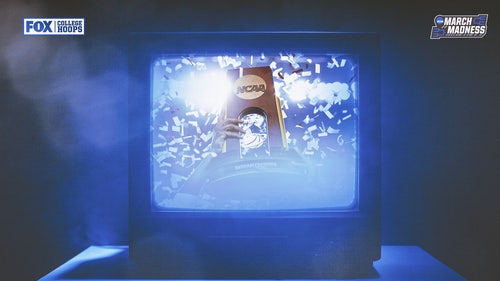Transfers having an impact on women's Final Four runs
SAN ANTONIO (AP) — There have been a huge number of players changing schools during their college careers over the last few years and some of them are having an impact on the women’s NCAA Tournament.
Final Four participants UConn and Arizona both have transfers playing pivotal roles who have helped them advance in the tournament.
Evina Westbrook became a Huskie in 2019 after starting her career at rival Tennessee. Aari McDonald began her playing career at Washington before heading to Arizona with Wildcats coach Adia Barnes.
"She’s been kind of the avalanche that started all of our other recruiting,” said Barnes. “She’s such a gifted player and I don’t think players like her come around that often. I mean, I told her during that process when she was transferring, ‘come here and build something special with me.’ And she’s done that and she’s done a tremendous job. ... She would have impacted Washington the same way.”
Westbrook just missed a triple-double in the Sweet 16 win over Iowa and McDonald had 33 points and 11 rebounds in Monday night's win over Indiana to lead the Wildcats to their first Final Four. The two teams will square off Friday night in the national semifinals.
Louisville also has benefitted from transfers over the last few years like Kianna Smith and Liz Dixon.
“The transfer portal, it's become a way of recruiting,” Louisville coach Jeff Walz said. "We've had players go into the portal and gotten players from the portal. Sometimes players go places to get more playing time and have a bigger role and there's nothing wrong that.”
This trend is not new.
Baylor won the national championship in 2019 in large part due to the addition of grad transfer Chloe Jackson. The Lady Bears added another grad transfer this past season in DiJonai Carrington, who almost helped them knock off UConn in the Elite Eight Monday night. She became a Baylor Bear after playing at Stanford.
“I absolutely have enjoyed my time here thus far and I learned a lot about the game, learned a lot about myself,” Carrington said. “And I think I grew as a player and as a person and that’s all you can really ask for. They welcomed me with open arms, and Coach Mulkey let me be free and let me just play how I know I can play.”
Player movement is definitely still on the rise.
Since Aug. 3, there have been 781 women's basketball players in the NCAA portal, a person familiar with the situation told The Associated Press. The person spoke to the AP on condition of anonymity because many of the players haven’t publicly announced their decisions to transfer.
There were 648 players who transferred in 2018-19, about 12.8% of women's basketball athletes and 613 last season. In 2013-14 only 9.2% of players were transferring, up from 6.8% a decade ago.
It's not just on the women's side. The men currently have 1,068 entries in the portal, the person told AP.
The Houston men's team, which is in the Final Four for the first time since 1984, is one of many teams still playing that are led by a bunch of transfers.
The other top seeds in the men's regions also have transfers playing a key role, from top-ranked Gonzaga adding point guard Andrew Nembhard from Florida, to fellow No. 1 seed Baylor adding a third-team AP All-American in Davion Mitchell (Auburn) and MaCio Teague (UNC Asheville) as double-digit scorers.
“It’s funny how it’s changed," said said Oregon coach Kelly Graves, who started three transfers in the Ducks NCAA Tournament run that ended in a loss to Louisville in the Sweet 16. “There used to be a negative stigma attached to a player transferring or a school having a lot of transfer kids. Now there’s no stigma either way."
___
More AP women’s college basketball: https://apnews.com/Womenscollegebasketball and https://twitter.com/AP_Top25









